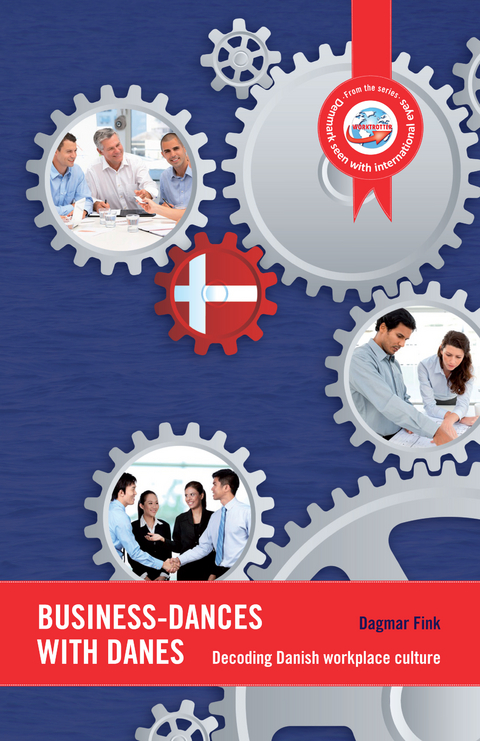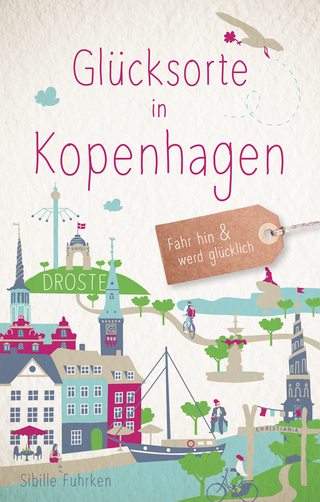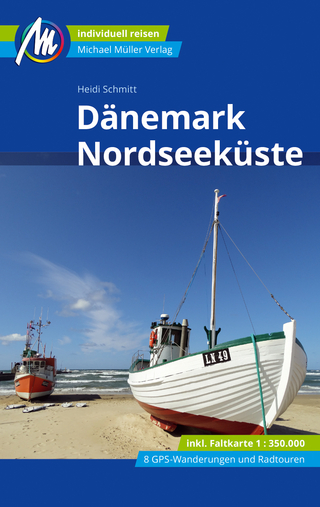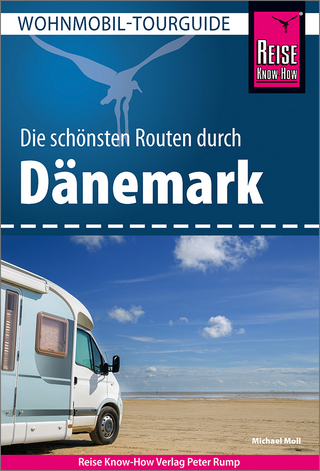
Business-Dances with Danes
Worktrotter Publishing (Verlag)
978-3-941696-05-1 (ISBN)
- Titel nicht im Sortiment
- Artikel merken
suggestions about how to deal with situations that you will encounter when working with Danes. While misunderstandings affect personal relationships, they can also affect professional relationships or business – money can be wasted, partnerships may break under the strain and many a business opportunity may be lost. This guide helps you to gain finesse and elegance in your interactions with Danes and according to the Worktrotter motto, do things smart – right from the start. Find more at www.worktrotter.dk
Dagmar Fink is German and moved to Denmark in 2006 after living in Germany, Romania, Sweden and the USA. She is a business engineer and has extensive experience as a business, people and project manager in innovative fields working forglobal companies including IBM and Mercedes Benz. Dagmar published "The Worktrotter’s Guide to Denmark" and established the Worktrotter network with more than 9,000 international and Danish professional members. http://www.worktrotter.dk
1. Your attitude
2. Important Danish characteristics
2.1 Democracy
2.2 Equality
2.3 Freedom of speech
2.4 Hygge
2.5 A homogeneous society
3. The economic landscape
3.1 Key facts about Denmark and its economy
3.2 The landscape for cross-border trade
3.3 The employee-landscape
3.4 The landscape of industry and business
3.5 Adapting to a smaller marketplace
3.6 Danes and technology
4. Cultural dimensions of Denmark
4.1 Power Distance
4.2 Individualism versus Collectivism
4.3 Masculinity versus Femininity
4.4 Uncertainty Avoidance
4.5 Long-term Orientation
5. Understanding Danish attitudes
5.1. The Danish sense of humour
5.2 How do Danes display emotion?
5.3 Danes are direct
5.4 Danes value honesty
5.5 The importance of trust
5.6 Danes and Danishness
5.7 Getting to know Danes
5.8 How to build relationships with Danes?
Interviewees – part one
6. The language
6.1 Why learn Danish?
6.2 Danish at the workplace
7. General etiquette and manners
7.1 General etiquette
7.2 Addressing Danes
7.3 Customary use of language
7.4 Body language, gestures and personal space
8. Equality and community
8.1 Jantelov
8.2 Equality and Jantelov in the Danish workplace
9. A culture of discussion
9.1 Nurturing a culture of discussion and healthy debate
9.2 Meetings
9.3 Meeting etiquette
9.4 Provide an explanation
9.5 Use facts to your advantage
9.6 Express yourself!
9.7 Ask questions
9.8 Negotiations
10. Working independently
10.1 Take initiative and show leadership
10.2 Take responsibility
10.3 Focus on the outcome
10.4 Learning to adapt and planning ahead
11. Socialising with Danes – it’s all about hygge
11.1 Contributing to a good work environment
11.2 Social activities at work
11.3 First day at work
11.4 Being a hard worker versus hygge
11.5 Party and drinking culture
12. Balancing work and personal life
12.1 Relaxed attitude towards work
12.2 Prioritising family life
12.3 The average work day
12.4 Working overtime
12.5 Flexible hours
12.6 Dealing with stress
12.7 Be transparent
12.8 Friendships at work
Interviewees – part two
13. Leading and being led in Denmark
13.1 Authority and respect
13.2 Inclusive leadership
13.3 The roles of a manager
13.4 Teamwork
13.5 Giving and receiving feedback
13.6 Mentor
14. Dealing with conflict
14.1 Rule-related conflicts
14.2 Conflicts on “soft” topics
15. Concluding thoughts
Foreword As the cover of this book nicely depicts, each country is a wheel in the global economic machinery. More and more people from different cultures work together and are expected to achieve common goals. For this reason it is important that we understand each other properly, that we understand what is said, and also those things which remain unsaid, either because they are seen as self-evident or because we don’t know how to approach topics we experience as delicate. Achieving this with people from the same cultural background can be a challenge. When we add to this communication across cultural boundaries with different values, different ways of expressing ourselves, and different triggers we do get a recipe for misunderstandings and lack of productivity. Denmark is part of the global machinery and people from very different countries come to work in Denmark and more and more Danes work in jobs where they interact with non-Danes – in Denmark or abroad. This book makes a great contribution to ensure a better understanding of the Danish workplace culture. In a detailed and entertaining way it enables non-Danes to understand what is important when working with Danes and how to “speak” the cultural language of the Danish workplace. If non-Danes are more aware of how Danes work and why they do certain things, they can better interact with them. But not only that: I believe that Danes have to recognise and be made aware of the more specific aspects of their culture and how it refers to others. We are probably not very aware of them but the book provides eye-openers and “a-ha“ moments. Using these eye-openers I believe Danes can better relate to cultural differences when they deal with non-Danes. By making Danes and non-Danes better prepared for the cultural differences they may encounter when working together and especially by pointing out how to overcome them, the book Business-Dances with Danes supports a smoother cooperation, which is bound to make business relationships of Danes with non-Danes more successful. The power of diversity is a considerable factor in making Denmark capable of competing in the global economy. Diversity is the bridge between the workplace and the marketplace. Diversity drives innovation, which in turn drives growth. Enjoy the book, whether you are Danish or not. I feel confident you will learn from it, and it will be a tool to make you more efficient when interacting between Danish and non-Danish culture. Lars Mikkelgaard-Jensen, Country General Manager IBM Denmark
| Erscheint lt. Verlag | 19.11.2012 |
|---|---|
| Verlagsort | DE |
| Sprache | englisch |
| Maße | 135 x 208 mm |
| Gewicht | 272 g |
| Einbandart | Paperback |
| Themenwelt | Sachbuch/Ratgeber ► Beruf / Finanzen / Recht / Wirtschaft |
| Reiseführer ► Europa ► Dänemark | |
| Wirtschaft ► Betriebswirtschaft / Management | |
| Schlagworte | Auswandern • business • business culture • cross-cultural interaction • Cultural Differences • Dänemark • Danes • Denmark • Expat • Leadership • Management • Umziehen • Work • work culture |
| ISBN-10 | 3-941696-05-X / 394169605X |
| ISBN-13 | 978-3-941696-05-1 / 9783941696051 |
| Zustand | Neuware |
| Haben Sie eine Frage zum Produkt? |
aus dem Bereich


